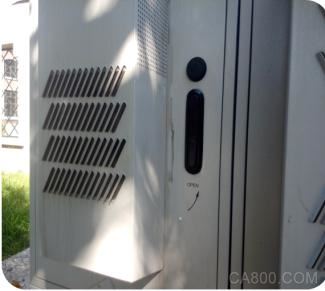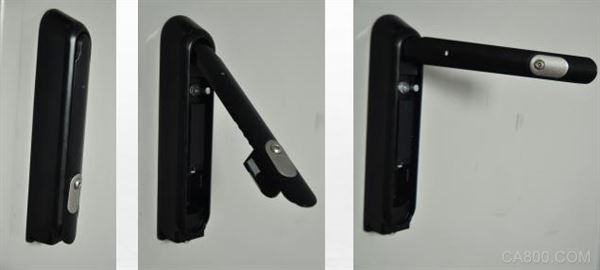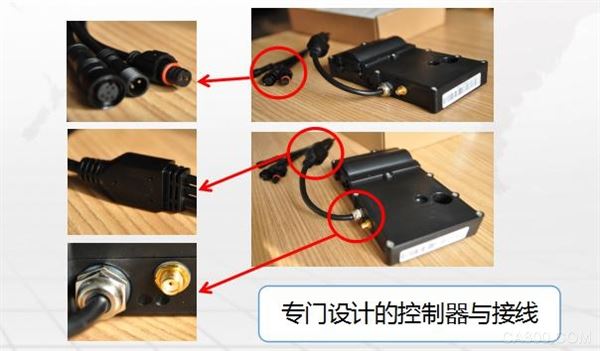The completion of the NB-IoT network means that the biggest bottleneck of the Internet of Things has been opened up, and the era of the Internet of Things is officially coming! Almost all industries are upgrading the Internet of Things, and the three major operators that provide the Internet of Things are no exception. Nearly tens of millions of optical box locks have begun a comprehensive Internet of Things transformation: on the one hand, enjoy the management advantages brought by the Internet of Things. In terms of card output, why not?
Optical delivery boxes were originally equipped with mechanical locks. Later, they began to use electronic locks that could not be connected to the Internet. They used 2G, 3G, and GPRS communications. Electronic locks with networking capabilities can realize remote unlocking, temperature and humidity monitoring, flooding/vibration/lock picking/key unlocking alarms and other functions, bringing the management of light delivery boxes to a real level. The development of truly networked electronic locks is inherently difficult. In addition, there is no suitable communication network, so there should be very few networked electronic locks on the market. NB-IoT has ignited the market, and a large number of R&D manufacturers and solutions for light cross-box locks have emerged at once. A mixture of fish and dragons is unavoidable, and it is unavoidable that users are pitted as mice. So how to avoid the pitfalls of product selection?
First of all, you need to know that there are several types of manufacturers' products that are best not to be tried lightly in a short time. The first is lock manufacturers. These companies focus on mechanical R&D and manufacturing, and their electronics, network and software R&D capabilities are extremely weak, and their IT parts are basically supplied by other supporting manufacturers. The second is a company that has not done networking solutions before. A door lock that is not connected to the Internet is like the feature phone we used back then, which is completely different from the smart phone we use now. Some people think that the development of networked door locks is nothing more than adding communication functions to the original electronic locks. In fact, this is far from the case. Selection is very important for manufacturers.
Then, you need to know what are the difficulties in the development of the light delivery box lock. When choosing a product, focus on these areas to avoid many pitfalls.

A real shot of the special lock for delivery box designed by Anxuntong
Anxuntong focuses on the research and development of large-scale networked door lock systems. With more than ten years of accumulated experience in the research and development of door locks, communications and large-scale management systems, when NB-IoT first appeared, it seized the opportunity and made the first in the country. NB-IoT door lock. The three major NB-IoT door lock model projects in the country: Tsinghua University, Changchun Talent Apartment, and the light delivery box project in a certain southwestern province, all use Anxuntong's door locks. Anxuntong’s NB-IoT optical cross-box locks have been piloted and installed in batches in seven provinces. Now let’s talk about the difficulties in the development of optical cross-box locks and our solutions:
1. Communication:
NB-IoT has many advantages, but it does not mean that manufacturers can buy a module and add it to the circuit board. NB-IoT has many parameter settings, which need to be selected and configured according to specific business requirements. Some companies even put the NB-IoT antenna directly in a fully enclosed metal box. Although the coverage of NB-IoT is strong, it will lead to extremely unstable communication or even impossible to communicate at all when the signal is weak.
Anxuntong’s solution is to design a dedicated NB-IoT external antenna for the all-metal optical switch box to ensure stable communication under any circumstances.

2. Locks:
The existing optical delivery boxes are upgraded, basically the original mechanical lock is removed and replaced with a door lock that can communicate. The keyholes cannot be exactly the same. The traditional lock installation requires an angle grinder to cut. There is no power supply in the light delivery box, and the installation will be very difficult and time-consuming.
Anxuntong's solution is to design a special lock for "floating installation", which can be installed only by drilling a few holes with an electric drill, saving time and effort, and has strong adaptability.

Floating lock specially designed for light delivery box
3. Low temperature suitability:
The temperature in winter in the north may reach minus 20 degrees or even minus 40 degrees. If the electronic components, batteries, and the driving parts of the door lock are not specially designed, they will not work normally at low temperatures. For example, when the battery is at low temperature, the high current at the moment of unlocking can reduce the voltage to 2.5 volts, causing the MCU reset circuit to fail. For example, the electromagnetic drive door locks used by most companies may not be unlocked due to insufficient magnetic force at low temperatures...
An Xun Tong has made a special design for the northern optical delivery box project. For example, if you charge the power storage device before unlocking, the unlocking current will not cause the voltage to drop instantaneously; An Xun Tong's unlocking drive uses a motor method, and Special anti-coagulation motor lubricants are used in low-temperature areas in Beijing... Even so, the low temperature that Anxuntong can currently promise may reach minus 30 degrees.
4. Waterproof and moisture-proof:
The long-term rainy season, the condensation of humid weather, the humidity of the sun after the rain, and even the flooding of heavy rain...These will make the controller and locks of the light switch face severe waterproof and moisture-proof tests. Some light cross box locks do not have a basic moisture-proof and waterproof design, or fail to consider the protection failure caused by the deformation of the light cross box. No problem can be seen during the test, and the problem occurs frequently during use, and the failure will disappear when it is tested. Some companies attach importance to waterproofing and moisture-proofing, but are unable to open the mold by themselves (not only requires a lot of investment, but also requires a strong structural design ability), and use the shell of the male mold for waterproofing, resulting in a very heavy shell, and there may be no space for installation and replacement Battery or maintenance is very time-consuming and labor-intensive.
Anxuntong independently researched and developed, designed and opened a mold to manufacture a special control case for the delivery box, which has passed the IP67 level test and will not fail even if it is soaked in water.

5. Choice of battery:
There is no power supply in the light delivery box, and the battery must be used for at least 2 years. When choosing a battery, there are many difficulties, such as the contradiction between battery capacity and volume, few low-temperature batteries can be selected, and many large-capacity batteries cannot monitor the remaining capacity...
Anxuntong’s light delivery box can choose either disposable large-capacity batteries or rechargeable lithium batteries. For different application scenarios, batteries with different characteristics may be selected.
6. Power consumption control:
Many companies believe that NB-IoT has very low power consumption as advertised. In fact, the power consumption of NB-IoT is only lower than that of traditional communication methods such as GPRS, and the absolute power consumption of one communication is still relatively large. This requires designers to spend a lot of energy on power consumption control. Some of the alarm functions of the optical switch box require strong real-time performance, requiring that the alarm signal is detected immediately, so only the "interrupt" device can be used...
7. Stability:
The optical switch box works in a harsh outdoor environment and may be subject to various interferences. On the one hand, it is necessary to find ways to improve the reliability of the product, and on the other hand, remedial measures must be taken once the controller fails. Otherwise, there is a problem with the controller and you need to pick the lock!
There are many ways to improve product reliability, such as improving the performance of all aspects of protection (waterproof, moisture-proof, electromagnetic interference, etc.), the system has the ability to automatically restart, and the ability to remotely diagnose...At the same time, there must be preparations for controller failure, such as retention The mechanical key must have a button to control the restart.
8. Software:
The software of the optical delivery box is still very complicated. All data must be forwarded through the IoT platforms of the three major operators. The IoT platforms of the three major operators are different. It is necessary to ensure real-time, accurate, complete data, and strong confidentiality. There is still a lot of difficulty. And it is necessary to realize the unified management of tens of thousands or even hundreds of thousands of locks, the management of thousands of maintenance personnel, automatic fault analysis and alarm, statistical analysis of large amounts of data, and interfaces with other related systems...The difficulty can be imagined, there are not many With years or even more than ten years of software team and large-scale network management software experience from all walks of life, any company that claims to be able to experiment with the management of light locks is untrustworthy.
In short, if system integrators and operators think that the optical delivery box product is very simple, it will be a very dangerous thing. We even see a lot of "disasters" caused by this. Hope this article can help you choose the right product. .
Circular Automation Connectors
Antenk `s M-Series connector range is the ideal connectivity solution for industrial automation technologies that require fast, secure and reliable connections with a high degree of environmental protection. Our automation interconnect range includes field-attachable circular connectors with industry standard M5, M8, M12, M16 & M23 threads in addition to panel mount receptacles, overmolded cable variants and power/signal distribution units.

Industrial & Automation Circular Connectors Application:
Factory Automation
Robotics
Measurement & Instrumentation
Manufacturing
Process Control
Medical
Food & Beverage Processing
Industrial Network
M5 Connectors
The most compact connector type in the M-Series range, our waterproof M5 sensor connectors come in straight and angled forms with PVC or PUR overmolded cable connector options and a variety of panel mount receptacles.
With a screw coupling mechanism and IP67 rating, this M5 circular connector product line is particularly suited to automotive, process control, commercial electronics & instrumentation applications that require reliable and robust miniature sensors.
M8 circular connectors
Our M8 circular connectors and cables are designed to fulfil the ever growing demand for sensor, actuator and data connections in process control, industrial machinery and factory automation applications.
These compact sensor and automation connectors with screw lock coupling are mechanically and chemically robust, easy to install, minimise downtime and help to increase production efficiency. Rated to the IP67 standard, our M8 Series ensure safe, secure and reliable protection from liquids, dust, moisture and dirt whilst also providing great resistance against vibrations to ensure that connections are not disrupted.
M8 connectors Key Features
Straight and right-angled configurations
Quick and secure screw coupling mechanism
A and B coded
Environmental protection class IP67
Field installable, panel mount and overmolded connectors
PVC or PUR jacketed cable variants with lengths 1m – 15m
3, 4 or 5 contacts
Metal and plastic shell options
M12 connectors
M12 connectors are established as one of the most reliable and efficient connection standards for Industrial Machinery and Factory Automation applications. With a small footprint, extremely low failure rate and high performance capabilities, this range is ideal not only for sensor connections but also for various fieldbus systems.
With a high degree of mechanical and electrical stability, our M12 connectors and cables provide a cost effective and flexible plug & play connectivity solution for onsite installations, helping to decrease downtime in process control, manufacturing automation and industrial instrumentation applications.
M12 Circular connectors Key Features
Industry standard screw locking mechanism
IP67 degree of protection
A, B, D and X Coded versions
Field installable, cable and panel mount options
Plastic and metal, straight and right-angled variants
Pole variants from 3 – 12
Shielded options
Overmolded PVC or PUR cable connectors
M16 Connectors
With a rugged metal housing and environmental protection rating of IP67 when mated, this robust M16 DIN connector range is an ideal solution for ensuring that power and signal connections are not compromised in harsh environments and industrial applications.
M16 Circular Connectors Key Features
Screw locking compliant with DIN EN 61076-2-106
IP67 degree of protection
Robust metal connector shells
A-Coded field installable and panel mount variants
Pole variants from 3 – 12
Excellent EMI shielding
M23 Connectors
Typically used for providing high performance, reliable and robust connections in commercial and industrial automation applications, these IP67 rated signal and power connectors offer a high degree of protection against environmental factors such as water, dirt and moisture.
Antenk`s range of M23 Connectors includes field installable male and female connectors and front panel mount options from 12-pole to 19-pole in straight and right angle versions.
M23 Circular Connectors Key Features
A-Coded
Straight and angled configurations
Male and female variants, 12 or 19 pin
Robust metal housing
IP67 protection rating (when mated)
Voltages up to 200 V and currents up to 8 A
M5 Connector,M8 Connector, Pp9 Connector,M23 Connector,M12 Connector, M16 Connector,PP9 Connector,Circular Automation Connectors,Industrial & Automation Circular Connectors
ShenZhen Antenk Electronics Co,Ltd , https://www.antenkcon.com